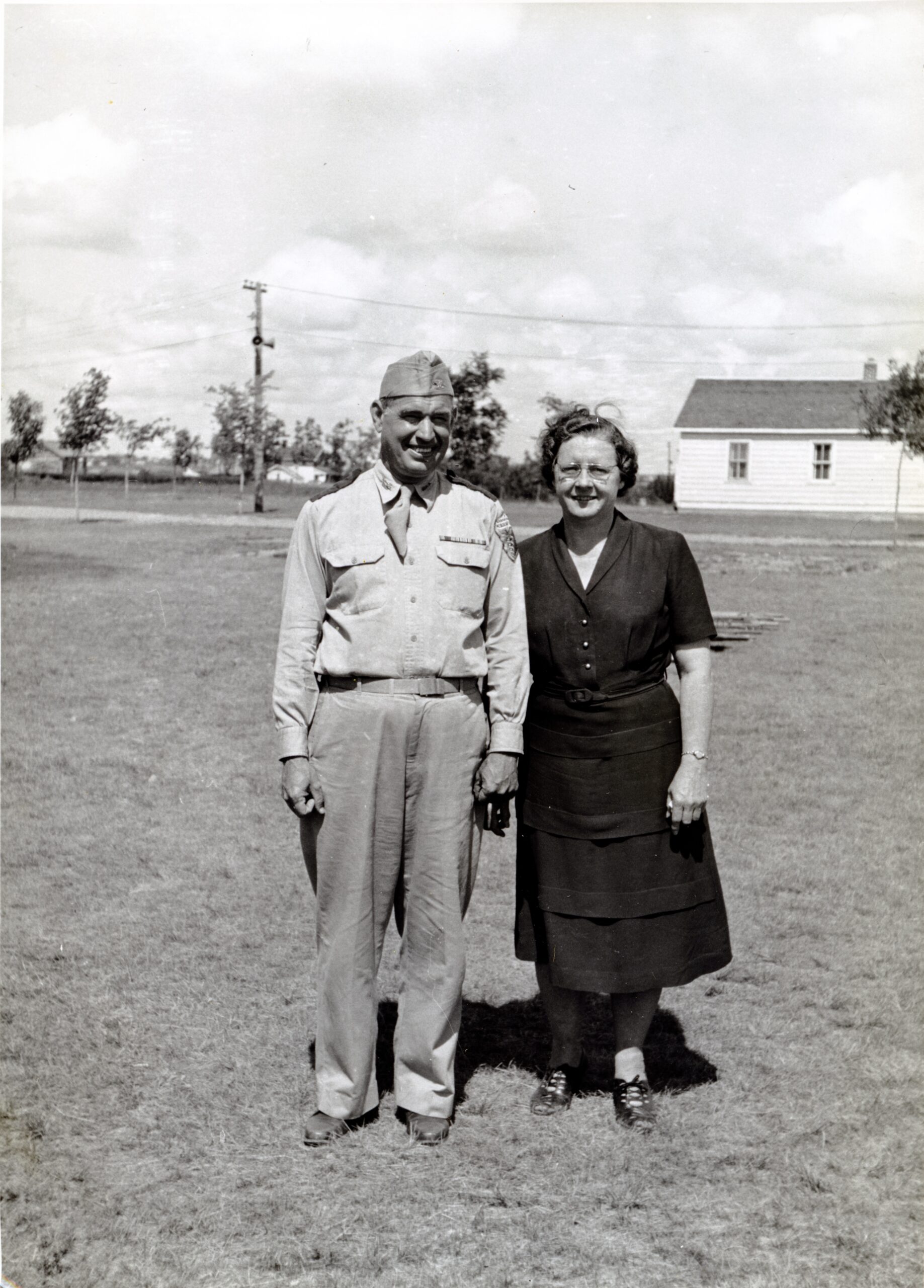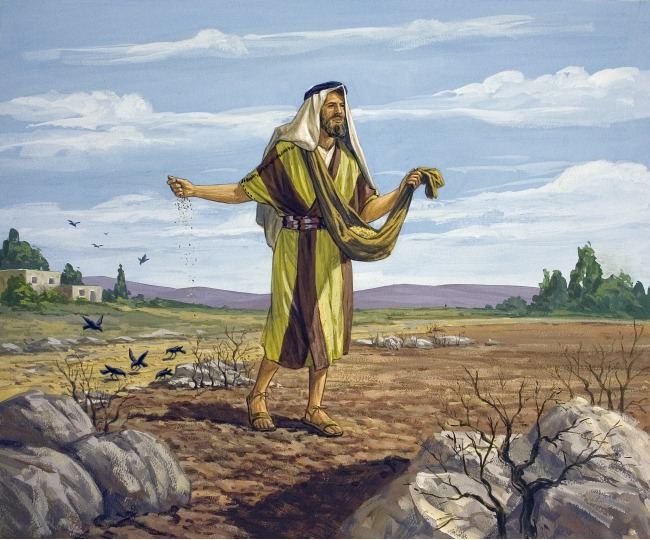Sabbath School Lesson for July 20-26, 2024
Overview of Lesson 4, Parables
Memory Text: “Then He said to them, ‘Take heed what you hear. With the same measure you use, it will be measured to you; and to you who hear, more will be given. For whoever has, to him more will be given; but whoever does not have, even what he has will be taken away from him.’ ‘ Mark 4:24, 25 NKJV
These verses about measuring remind us of what Jesus said in Matthew 7:2 about not judging people: “…with the measure you use, it will be measured back to you.” The theme of measuring was used on different occasions in Jewish culture. The consequences of sin, for example, should fit the crime–“measure for measure”.
In Mark 4:24, 25, however, the meaning takes on quite a twist. Jesus was telling them to listen carefully, because when we have our spiritual “basket” filled, and then share it, we can expect God to fill it even more–with a greater measure. Using the words of the gospel to enlighten others will guarantee us a full supply of His abundant grace.
The parables Mark shared in chapter 4 provide a summary of what Jesus wanted us to understand about the gospel of His kingdom. They each talk about sharing the gospel with others and how our faith can grow. The Savior wants us to let our light shine and sow the seed wherever He sends us. Working with Him, we can expect a bountiful harvest when the Lord returns.
The parables in Mark 4 will include:
- Sunday: The Parable of the Sower–The gospel seed is treated differently, depending on the soil where it falls.
- Monday: Jesus’ Interpretation–Jesus often explained His stories so His disciples would understand them more fully..
- Tuesday: The Reason for the Parables–Jesus wanted everyone to understand His parables, but realized that some wouldn’t.
- Wednesday: Lamp and Measuring Basket–We shouldn’t hide our light under a bushel. We should share our spiritual blessings with others and keep coming back for more.
- Thursday: Parables of Growing Seed–We need time to grow our faith. Seeds can grow to enormous heights.
Sunday: The Parable of the Sower
It feels like Jesus was talking especially to His disciples with this parable about the sower. Anyone who sows the seeds of the gospel can expect the results described in this parable, which is really four individual stories, centered on the topic of discipleship. See Mark 4:1-8.
The first three stories, about the seed falling by the wayside, on stony ground, or among thorns, describe disappointing, agricultural failures. Jesus explained later that He was referring to how we plant the gospel seed in someone’s heart. It’s apparently not our job to choose the soil, because God expects us to witness in all the places we are sent.
Depending on how receptive the heart is will determine the outcome of the planting. Each of us are given the privilege of choosing God or not. The unsuccessful plantings on bad soil or among thorns have immediate, temporary results. But when the seed falls on fertile, good soil, much fruit will eventually be born, growing the kingdom of God and bringing glory to His name.
Bible Verses to Explore:
Mark 4:1-9 and Matthew 7:13-14
- What happens to the seed as it falls on different kinds of soil?
- Why is there more time spent on discussing the failures of the crop than on its final, bountiful success?
Monday: Jesus’ Interpretation
Jesus graciously explained the parable of the sower so the disciples wouldn’t miss any of the details meant to warn them about the cost of discipleship. They, especially, must be forewarned about the different kinds of hearts they would encounter in God’s service. See Mark 4:13-20.
The seed, they were told, was the Word of the gospel, the sowers were the disciples, and the soil was the receptivity of their listeners’ hearts. The seed thrown on the wayside path would, therefore, soon be snatched away by birds (or Satan). The stony ground would prevent deep rooting, seen by the shallow commitments to God that are sometimes made. And the thorny ground that produced much weeds represented the cares of this life that choked out the effectiveness of the gospel for that person.
Only after bringing them these tragic failures did Jesus rejoice with them about the good soil of those who heard the gospel and responded in a way that would produce an abundant crop. The rise of the Christian church following the death of Jesus certainly made this predicted outcome very real.
Bible Verses to Explore:
Mark 4:13-20
- What did Mark see about this parable of the sower that must have impressed him enough to include it in his gospel record?
- Why is this parable meaningful for anyone who decides to follow God?
- When in earth’s history will there be a bountiful crop to be harvested?
Tuesday: The Reason for the Parables
Jesus’ purpose for using parables was not to hide the truth from people, as some have thought. We know that Jesus bravely spoke in parables to hardhearted religious leaders, such as in Mark 13:1-12, a parable about wicked vinedressers. They understood and knew clearly that the parable was about them.
The meaning of Mark 4:10-12, a paraphrase of Isaiah 6:9-10, is a confusing text. Reading Isaiah 6, however, we find a God who is intent upon comforting His people and imploring them to find forgiveness and repentance by choosing Him. Indeed, God wants all to “come to repentance” (2 Peter 3:9). He died for the sins of the whole world (1 John 2:2).
Jesus knew that some would understand the truth about the kingdom of God and others wouldn’t. When His own disciples needed more clarification about one of His stories, He didn’t hesitate to give it, because He knew their hearts were already drawn to Him and they were wanting to do God’s will (Mark 3:35).
Bible Verses to Explore:
Mark 4:10-12 and Isaiah 6:9-10
- Even though Jesus’ parables weren’t understood by all, why did Jesus use them in His ministry?
Wednesday: Lamp and Measuring Basket
Light is a theme found throughout the Scriptures, and is no doubt why it has become Jesus’ most beloved parable and illustration. God said in Genesis 1:3, “Let there be light” and that His word was “a light to my path” (Psalm 119:105). The lampstand was a prominent piece of tabernacle furniture, and Jesus was called “the true Light” (John 1:9). Even a children’s action song today has the words “This little light of mine, I’m going to let it shine”.
Jesus asked some silly questions that got attention with His short parable of a lamp (Mark 4:21). He asked the multitude if they should put a lamp under a bushel or under a bed. Of course, the expected answer was “no”; it should be on a lampstand. Matthew expanded on Jesus’ meaning, telling them they were the light of the world, like a city on a hill that can’t be hidden. He finished by saying, “Let your light so shine before men, that they may see your good works and glorify your Father in heaven” (Matthew 5:14-16).
Jesus then brought ears into the conversation. If they shared what they heard and saw about the gospel of salvation, they would receive even more light from the Master (Mark 4:23-25). Their measuring basket would be overflowing, just as the cup of the psalmist in Psalm 23.
Bible Verses to Explore:
Mark 4:21-22, Matthew 5:14-16, and John 1:9
- How do these verses in the other two Gospels help us understand Jesus’ comment about light in Mark 4?
Mark 4:23-25
- Why must we be careful about what we hear and what we share with others–so important in a world today of widespread disinformation?
- How can we know that we are hearing truth?
Thursday: Parables of Growing Seed
Mark provides a short parable about the kingdom of God in Mark 4:26-29. Jesus said, a seed is planted by a farmer, and while he sleeps, it mysteriously goes through all its growth stages, and is finally ready to be harvested. This shows us the close working relationship we must have with our heavenly Father through the Holy Spirit, in order to produce a harvest of souls. He works with people when we can’t.
The parable about the growing process is followed by one of a mustard seed, which is one of the smallest of seeds. But we are reminded in this parable that it later grows into a mighty tree, whose branches provide nests for birds (Mark 4:30-32). What encouragement this has been for all disciples of Christ. We have no idea how far-reaching our tiny efforts may prove to be.
Both of these parables about growing seed, the Word of God, also remind us that our Christian journey is one of growth. We should be patient with ourselves and others as we go through various stages of growing our faith.
Bible Verses to Explore:
Mark 4:26-29
- What do we learn from this short parable?
Mark 4:30-32 and Matthew 17:20
- Who might benefit the most from these parables of growing seed?
- What part does our faith have when we think of a mustard seed?
Friday: Final Thoughts
Finding hope in the kingdom of God, and faith in His promise that it is ours when we ask for it, are both worthy of our attention. But there is one more ingredient included in the gospel of salvation. Perhaps the most important one of all (1 Corinthians 13:13). Read Paul’s description of it in 1 Corinthians 13.
It is love that motivates us to action as we seek to do God’s will. Jesus’ compassion was evident in all He did and said during His earthly ministry. He has shared His gracious love with us, so we can work with Him to spread it to others around us.
What Jesus hoped to impress upon His disciples with His parables and His life of surrender to God is summed up here…
“Love must be the principle of action…Christ gave all for us, and those who receive Christ will be ready to sacrifice all for the sake of their Redeemer. The thought of His honor and glory will come before anything else.” ~Ellen G. White, Christ’s Object Lessons, pp. 48, 49
Next Week: Miracles Around the Lake
To read the Sabbath School Lesson Quarterly and see more resources for its study, go to









